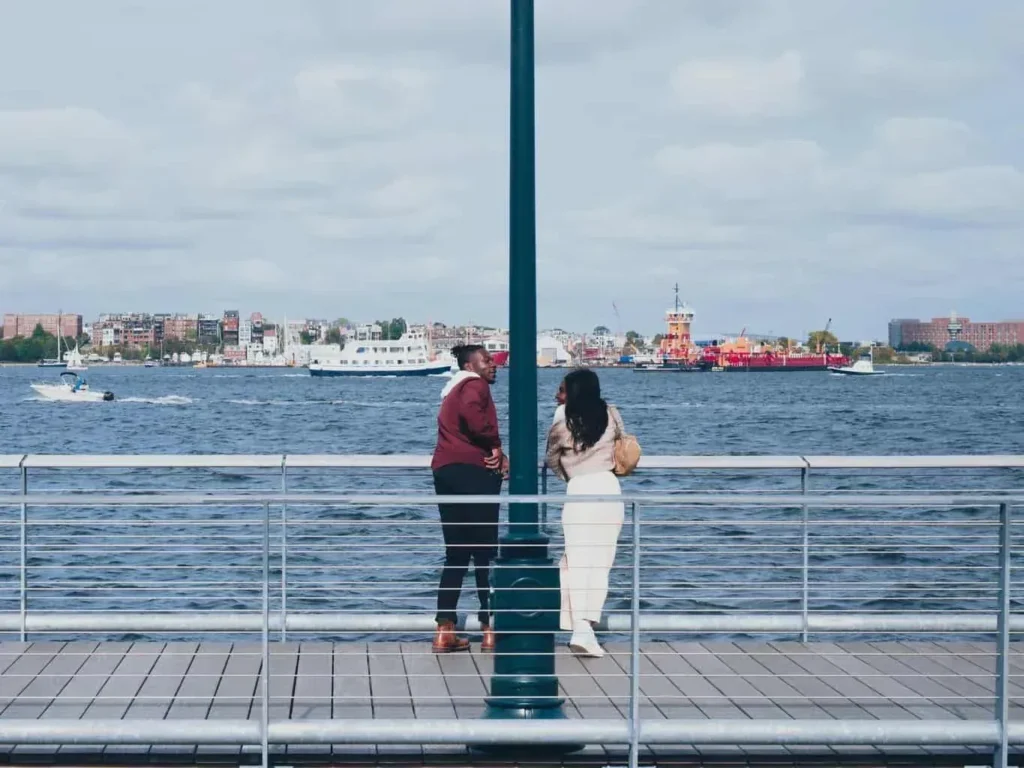So you’re curious about retro style, huh? Well, let me break it down for you. Retro style refers to fashion, design, or anything that emulates the trends and aesthetics of the past. But here’s the tricky part: what years exactly are considered retro? Is it the swinging 60s? The groovy 70s? Or maybe even the shoulder-padded 80s? In this article, we’ll unravel the mystery and uncover the specific decades that define retro style, taking you on a nostalgic journey down memory lane. Get ready to embrace the vintage vibes!
Understanding Retro Style
Definition and explanation of retro style
Retro style refers to the imitation or revival of the trends, styles, and aesthetics from the past. It is characterized by borrowing elements from previous eras, often with a nostalgic feel. Retro style can encompass a wide range of decades and influences, from the glamorous Art Deco of the 1920s to the bold and vibrant pop culture of the 1980s.
Why retro style is popular
Retro style enjoys enduring popularity due to its ability to evoke a sense of nostalgia. It allows individuals to reconnect with the past, reminiscing about a simpler time and finding comfort in familiar aesthetics. Retro style also offers a unique and distinct aesthetic that stands out in a world of modern minimalism. Whether it’s the sleek lines of mid-century modern furniture or the bold patterns of the 1970s, retro style adds character and personality to spaces and wardrobes.
How retro style influences current trends
Retro style has a profound influence on current trends across various industries. Fashion designers often draw inspiration from past decades, reinterpreting vintage silhouettes and patterns for contemporary looks. Interior designers incorporate retro furniture and décor pieces to add a touch of nostalgia and charm to modern spaces. In graphic design and advertising, retro-inspired visuals are frequently used to evoke a sense of nostalgia and captivate audiences. The influence of retro style can also be seen in music, with artists sampling or reimagining sounds from previous eras to create new hits. Overall, retro style serves as a powerful source of inspiration for creative industries and adds depth and character to modern trends.
Origins of Retro Style
Roots of retro style
The roots of retro style can be traced back to the early 20th century, when designers and artists began looking back at historical styles for inspiration. The desire to revive past aesthetics and incorporate them into contemporary designs marked the beginning of the retro movement. It started as a response to the dominance of modernist styles in the mid-20th century, with artists seeking to challenge the notion that “newer is better.” By embracing the aesthetics of the past, retro style aimed to bring a sense of timelessness and emotional connection to design.
Impact of cultural and societal changes on retro style
Cultural and societal changes throughout history have significantly influenced the evolution of retro style. During times of social and political unrest, people often turn to nostalgia as a form of escape or comfort. This was particularly evident during the post-war period, where the desire for stability and familiarity sparked a resurgence of retro fashion and design. Additionally, the feminist movement and changing gender roles in the 1960s and 1970s influenced the adoption of retro styles that challenged traditional norms and embraced individuality.
Role of technology in shaping the retro style
Technology has played a crucial role in shaping retro style. Advancements in printing techniques, photography, and film during the early 20th century allowed designers to capture and preserve the aesthetics of different eras. The accessibility of historical imagery and the ability to reproduce it on a mass scale contributed to the popularity of retro style. As technology continues to evolve, it enables contemporary designers to reinterpret and adapt retro aesthetics using modern techniques, further adding to the allure of retro style.

This image is property of images.unsplash.com.
Retro Style in the 1920s – 1930s
Fashion trends of the time
The 1920s, also known as the Roaring Twenties, saw the rise of the flapper style and Art Deco influences. Women embraced shorter hemlines, dropped waists, and loose-fitting silhouettes, challenging the conservative fashion of the previous era. In contrast, the 1930s marked a return to more feminine and tailored styles, influenced by the Hollywood glamour of the time. Bias-cut gowns and tailored suits with wide-leg pants became iconic fashion trends of this era.
Influence on interior design
Art Deco emerged as a dominant style in interior design during the 1920s and 1930s. Inspired by the geometric shapes and luxurious materials, Art Deco interiors featured bold patterns, mirrored surfaces, and streamlined furniture. The use of metals, such as chrome and brass, added a touch of sophistication. This era also witnessed the introduction of modern kitchen appliances and streamlined designs, setting the foundation for the future of interior design.
Impact on popular culture and media
The 1920s and 1930s were a golden age for popular culture and media. The emergence of cinema and the creation of Hollywood contributed to the spread of glamorous fashion and lifestyle trends. Iconic films like “Gone with the Wind” showcased elaborate costumes and opulent settings, influencing fashion and design trends. The rise of jazz music in the 1920s also had a significant impact on popular culture, creating a vibrant and rebellious atmosphere.
Retro Style in the 1940s – 1950s
Post-war influences on style
The post-war period of the 1940s and 1950s brought significant social and cultural changes that influenced retro style. With rationing and limited resources during World War II, fashion became more practical and utilitarian. However, the end of the war and the subsequent economic boom led to a surge in consumerism and a desire for glamour. As a result, retro styles during this period focused on feminine silhouettes, hourglass figures, and elegant dressing.
Birth of modern design trends
The 1940s and 1950s saw the birth of modern design trends that still influence contemporary aesthetics. The mid-century modern movement emerged, characterized by clean lines, organic shapes, and minimalist designs. Famous designers like Charles and Ray Eames and Eero Saarinen introduced iconic furniture pieces and architectural designs that are now considered timeless classics. The emphasis on functionality and simplicity laid the foundation for future retro-inspired designs.
Iconic retro styles of the era
The 1950s witnessed the rise of iconic retro styles, such as the “New Look” pioneered by Christian Dior. This style emphasized a cinched waist, full skirts, and feminine details, resulting in a romantic and glamorous aesthetic. The popularity of pin-up girls and rockabilly culture also influenced fashion and design, with their distinctive hairstyles, bold prints, and leather jackets becoming iconic symbols of the era.

This image is property of images.unsplash.com.
Retro Style in the 1960s – 1970s
Influence of pop culture and music
The 1960s and 1970s were characterized by significant social and cultural shifts, which heavily influenced retro style. The emergence of youth culture, the counterculture movement, and the sexual revolution transformed fashion and design. Pop culture icons like The Beatles and the Rolling Stones defined the fashion trends of the time with their unique style, encompassing everything from mod fashion to psychedelic prints.
Key style elements and trends
The 1960s brought a departure from the conservative styles of the past. Mini skirts, bold patterns, and vibrant colors became the norm, reflecting the spirit of freedom and rebellion. The 1970s continued this trend with the rise of disco culture and bohemian fashion. Bell-bottom pants, platform shoes, and fringe details became iconic style elements of the era.
Impact on TV, film, and advertising
TV, film, and advertising during the 1960s and 1970s heavily utilized retro style to capture the evolving cultural landscape. Shows like “Mad Men” showcased the retro aesthetics of the 1960s and popularized the mid-century modern look. Films such as “Austin Powers” paid homage to the vibrant and kitschy style of the 1960s, while advertisements adopted nostalgic visuals to evoke emotions and connect with consumers.
Retro Style in the 1980s – 1990s
Rise of technology and its effect on style
The 1980s saw the rise of technology and the advent of personal computers, which greatly influenced retro style. The introduction of digital graphics and neon colors became synonymous with the era’s aesthetics. The fashion of the 1980s was characterized by bold and exaggerated silhouettes, shoulder pads, and vibrant colors. This era also witnessed the emergence of punk and new wave subcultures, which added elements of rebellion to retro style.
Key fashion and design trends
The 1990s marked a shift towards more minimalistic and grunge-inspired styles, contrasting with the excess of the 1980s. Denim, flannel shirts, and minimalistic shapes became popular fashion trends. In interior design, the 1980s and 1990s saw a resurgence of bright colors, geometric patterns, and oversized furniture, reflecting the bold and eclectic nature of the time.
Shifts in culture and their impact on retro style
The 1980s and 1990s were characterized by a shift in cultural values and the rise of consumerism. Retro style became a way to rebel against mainstream culture, embracing the aesthetics of the past as a form of individual expression. This era witnessed the revival of retro styles from the 1950s and 1960s, as well as the birth of new trends inspired by the rapidly changing technological landscape.

This image is property of images.unsplash.com.
Modern Interpretations of Retro Style
Revival of retro styles in the 21st Century
The 21st century has seen a resurgence of retro style, with a particular focus on recycling and sustainability. The concept of “vintage” has become fashionable, with individuals seeking one-of-a-kind pieces and reinterpreting retro aesthetics in a modern context. Thrift stores, flea markets, and online platforms have become treasure troves for finding unique retro pieces, allowing individuals to express their individuality while being conscious of environmental impact.
Influence on contemporary fashion and design
Retro style continues to influence contemporary fashion and design in myriad ways. High fashion designers often draw inspiration from retro aesthetics, incorporating vintage silhouettes, prints, and colors into their collections. In interior design, retro elements like mid-century modern furniture and vintage wallpaper are used to create nostalgic and visually appealing spaces. Additionally, the rise of social media and digital platforms has made it easier than ever to share and explore retro style, further influencing current trends.
Use of retro style in current media and advertising
Retro style remains a popular choice in media and advertising due to its ability to captivate and evoke emotions. TV shows like “Stranger Things” tap into the nostalgia of the 1980s, using retro aesthetics to transport viewers into a different era. Advertisements often utilize retro-inspired visuals to create a sense of familiarity and nostalgia, connecting with consumers on an emotional level. Retro style has become a powerful tool for branding and storytelling, allowing companies to establish a unique identity and stand out in a crowded marketplace.
Notable Retro Style Movements
Art Deco
Art Deco, which emerged in the 1920s, is a significant retro style movement that still influences design today. Characterized by geometric shapes, luxurious materials, and a sense of opulence, Art Deco can be seen in architecture, furniture, and fashion.
Mid-century modern
Mid-century modern is a retro style movement that originated in the mid-20th century and remains popular today. Known for its clean lines, organic shapes, and functionality, mid-century modern design has become synonymous with timeless elegance.
Pop Art
Pop Art emerged in the 1950s and 1960s as a reaction against the elitist nature of traditional art. It celebrated popular culture icons and everyday objects, often utilizing bright colors and bold graphics. Pop Art continues to influence contemporary art, design, and fashion.
Punk
Punk, which originated in the 1970s, challenged societal norms with its rebellious attitude and distinctive style. Characterized by torn clothing, leather jackets, and unconventional hairstyles, punk fashion and aesthetics continue to be a source of inspiration for alternative and streetwear styles.
Grunge
Grunge emerged in the 1990s as a counter-cultural movement. Its fashion style included thrifted and oversized clothing, combined with a disheveled and nonchalant appearance. Grunge aesthetics continue to influence streetwear and alternative fashion today.
Retro Style in Different Industries
Retro style finds its way into various industries, each incorporating its unique aspects and influences.
Fashion
In the fashion industry, retro style influences designers who often reinterpret and reimagine vintage silhouettes, prints, and fabrics. Retro-inspired fashion collections and vintage clothing stores offer a wide range of options for individuals to incorporate retro elements into their wardrobes.
Interior décor
Retro style is widely embraced in interior design, with mid-century modern furniture, vintage wallpaper, and retro-inspired color palettes becoming popular choices. Retro aesthetics add character and charm to living spaces and allow individuals to create unique and nostalgic environments.
Graphic design
In graphic design, retro style serves as a powerful tool for creating visuals with a nostalgic and timeless feel. Vintage typography, retro color schemes, and imagery inspired by specific eras are frequently used to evoke the emotions associated with the past.
Music
Retro style has a significant influence on music, with artists often sampling or reimagining sounds from previous eras to create new hits. Genres like soul, disco, and rockabilly continue to resonate with audiences, as they embody the retro spirit.
Technology
Retro style in technology often refers to the design aesthetics of vintage electronics, such as record players, typewriters, and rotary phones. Manufacturers often incorporate retro elements into modern devices to create a nostalgic appeal and to cater to individuals seeking unique and stylish tech.
Film and TV
Film and TV frequently utilize retro style to transport audiences to different eras. Whether it’s recreating the fashion and design of the 1920s or capturing the neon-filled streets of the 1980s, retro aesthetics play a vital role in creating period pieces and evoking a sense of nostalgia.
Automotive industry
The automotive industry often draws inspiration from retro style, with car manufacturers designing models that pay homage to classic cars, featuring vintage-inspired details and aesthetics. Retro-inspired cars evoke a sense of nostalgia and offer a unique and distinctive driving experience.
The Impact and Influence of Retro Style
How retro styles shape current culture and design
Retro style shapes current culture and design by bridging the gap between the past and the present. It allows individuals to connect with and pay homage to the aesthetics, trends, and cultural movements that have shaped society. Retro style challenges the notion of constant progress and encourages a more thoughtful and intentional approach to design and creativity.
Retro style in the digital era
In the digital era, retro style has taken on new forms and meanings. The accessibility of digital archives and social media platforms has allowed individuals to explore and share retro aesthetics more easily than ever before. Retro filters and editing techniques enable users to recreate the look and feel of past eras, adding a touch of nostalgia to modern digital content.
Retro nostalgia in popular culture
Retro nostalgia continues to be a powerful force in popular culture, influencing trends, fashion, design, and entertainment. Whether it’s the resurgence of vintage clothing and furniture, the popularity of retro-themed parties and events, or the reimagining of classic TV shows and movies, retro style taps into the deep emotions and collective memories of individuals. It connects generations and reminds us of the timeless beauty and creativity that transcends time.

